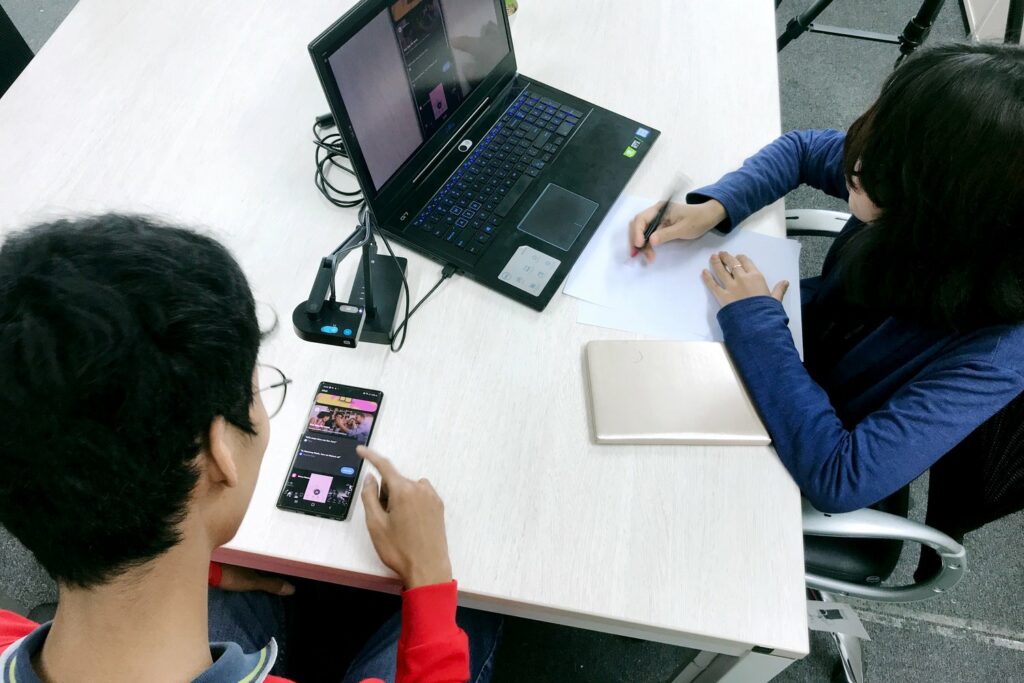You and your team have probably heard about this “design thinking” thing. It’s everywhere these days – companies are talking about how they use it, consultants are trying to sell it, and your boss might even be asking if your team should give it a try. Well, before you dive in head first, it’s worth getting familiar with what design thinking actually is and how it can help your team. In this quick crash course, we’ll break it down into simple steps so you can get the basics and decide if it’s something you want to put into practice. We’ll look at the key mindsets and processes behind design thinking, walk through an example project, and give you some tips for getting started. Whether you’re a total newbie or looking to level up your skills, you’ll learn the need-to-know info about this popular framework. Let’s get started!
What Is Design Thinking?
Design thinking is a problem-solving approach that brings together creative and critical thinking. It’s a methodology that provides a solution-focused framework to solve complex challenges. Design thinking utilizes empathy, ideation, and experimentation to gain insights that lead to innovative solutions.
Understanding the User Experience
The first step is developing empathy for the user by gaining an in-depth understanding of their needs, behaviors, and motivations. This involves conducting interviews, observations, and gathering feedback to identify pain points and uncover insights.
Generating New Ideas
With key insights in hand, ideation begins. This is a brainstorming phase where you generate a high volume of new ideas without judgment. Crazy and unconventional concepts are encouraged. The goal is to expand thinking and identify new possibilities.
Rapid Prototyping
Next, the most promising ideas move into prototyping. You build quick prototypes to start testing concepts with users. This could be something basic like a sketch, mockup or role play. The point is to get feedback fast, then iterate and improve based on user input.
Implementation and Feedback
Finally, the design team implements the new solution while continuing to gather feedback. This allows for ongoing optimization and the flexibility to pivot as needed to achieve the best outcome. The end result of the design thinking process is an innovative solution grounded in user needs.
Design thinking is a powerful framework that can be applied to develop new products, services, processes and strategies. By keeping the user at the center of concept development, you’re able to gain valuable insights that lead to solutions that truly meet customer needs.

Running an Effective Design Thinking Workshop
To get your team collaborating and innovating, organize a design thinking workshop. Define the problem or challenge. Have each participant write down key issues or obstacles, then vote to decide on a focal point for the workshop.
Build empathy. Send participants out to observe and interview customers, stakeholders, or subject matter experts. Come back together to share insights and themes. Look for common ground and points of tension. This helps frame solutions around real needs.
Ideate solutions. Brainstorm ways to address the key insights from the empathy stage. Go for quantity, not quality. Build on each other’s ideas. Capture everything.
Prototype the most promising concepts. Have groups rapidly create simple prototypes to make ideas tangible. It could be a role play, sketch, wireframe or physical model. Get feedback from others. Iterate if needed.
Test and evaluate. Discuss which prototypes showed the most promise and should be developed further. Look for solutions that are innovative, feasible and impactful. Decide on next steps for implementation.
A well-run design thinking workshop will energize your team and yield new ways of thinking about old problems. Provide enough time for each stage, from 3-5 hours for a full workshop. Have a facilitator guide the process and encourage participation from all. Capture key insights and ideas visually. Most importantly, foster a spirit of openness, curiosity and possibility. With practice, design thinking can become second nature, a part of your organizational culture and everyday way of working.
Critical Thinking Skills for Innovation
To cultivate an innovative mindset in your team, focus on strengthening key critical thinking skills. These skills allow you to evaluate ideas objectively and solve complex problems.
Asking probing questions
Teach your team to ask insightful questions that challenge assumptions and the status quo. Questions like “What if we looked at this from a different perspective?” or “Do we have data to back up that claim?” can uncover new insights and spur innovative ideas.
Evaluating arguments and evidence
An innovative team needs to be able to analyze ideas objectively. Look for logical flaws or weak evidence in proposals and encourage your team to consider alternative explanations or perspectives. Evaluate arguments based on facts and data rather than opinions.
Considering alternative solutions
Innovation requires an open and flexible mindset. Train your team to generate multiple options or solutions for a problem instead of settling for the first idea that comes to mind. New concepts often emerge at the intersection of diverse ideas. Challenge your team to combine or build upon options in unexpected ways.
Reasoning effectively
Innovative thinking depends on sound reasoning and judgment. Help your team strengthen skills like deducing logical consequences from evidence, formulating cogent arguments, and identifying logical fallacies. Reasoning effectively allows you to evaluate ideas objectively and determine the most viable solutions or strategies.
With regular practice, these four skills will become second nature to your team. Adept critical thinkers are able to innovate, solve complex problems, and make better strategic decisions. They are open-minded yet skeptical, eager to question and reevaluate when needed. Make critical thinking a habit, and watch as your team reaches new heights of creativity and innovation.

Getting Buy-in From Upper Management
Once your team has bought into the value of design thinking, it’s time to get the higher ups on board. After all, their support—both financially and culturally—is key to implementing design thinking across the organization.
Make a Solid Business Case
Come armed with concrete examples and case studies of other companies that have benefited from design thinking. Show how their revenues, customer satisfaction, and innovation increased. Translate this to your own company’s key metrics and priorities to demonstrate the impact design thinking could have.
Start Small and Scale
Suggest running a pilot design thinking project on a limited budget. This allows upper management to see the results firsthand without a major financial commitment. As they experience the benefits, they’ll be more willing to fund additional, larger scale initiatives.
Address Concerns Proactively
Be prepared to answer questions about how design thinking will impact timelines, budgets, and day-to-day work. Explain that while design thinking may require more time upfront, it leads to solutions better tailored to customer needs, reducing waste and rework. Discuss how design thinking principles can be applied without huge investments.
With data, examples, and a well-crafted argument for starting small, you can persuade even the most skeptical executives. But getting their buy-in is only the beginning. Ongoing communication and updates on your progress are key to continued support of design thinking at your company. When upper management sees the results firsthand, design thinking will move from a “nice to have” to an integral part of your business strategy.
Team Building Exercises to Foster Creativity
Brainstorming
Brainstorming is a classic team exercise that gets creative juices flowing. Gather your team and come up with an open-ended question or problem to solve. Set a timer for 10-15 minutes and have everyone shout out as many ideas as possible. No judgment allowed! Write down all ideas, no matter how silly they seem. You’ll generate tons of options to build upon.
Mind Mapping
A mind map is a visual organization of ideas. Start with your topic in the center of a whiteboard or piece of paper. Have team members generate associated ideas, drawing branches outward. Connect related ideas and come up with as many ideas as possible. Mind mapping encourages nonlinear thinking and sparks new connections between concepts.
Role Playing
Role playing helps teams gain new perspectives. Assign each team member a different persona, like a customer or executive. Have them advocate for a position or solution from that persona’s viewpoint. This exercise expands thinking by exposing teams to other angles they may not have considered before. Discuss how the different perspectives can shape better solutions.
Exercises like these get your team collaborating, thinking outside the box, and generating innovative options together. Run them regularly to strengthen creativity and problem-solving skills. While team building activities may seem like “play”, they have real work benefits when it comes to envisioning new products, services, or strategies.
Conclusion
So there you have it – a quick overview of design thinking and how to get your team started. Don’t let the fancy name intimidate you. At its core, it’s about understanding users, challenging assumptions, and iterating solutions. You don’t need to be a designer to put these principles into practice. Start small – pick a project, gather your team, and walk through the steps together. You’ll be amazed at how it opens up new possibilities. The goal is progress, not perfection. Build a culture of experimentation. Fail fast and learn from it. With some patience and practice, design thinking can become second nature. Soon you’ll be looking at all challenges through the lens of the end user. Get out there and start designing! You’ve got this.
